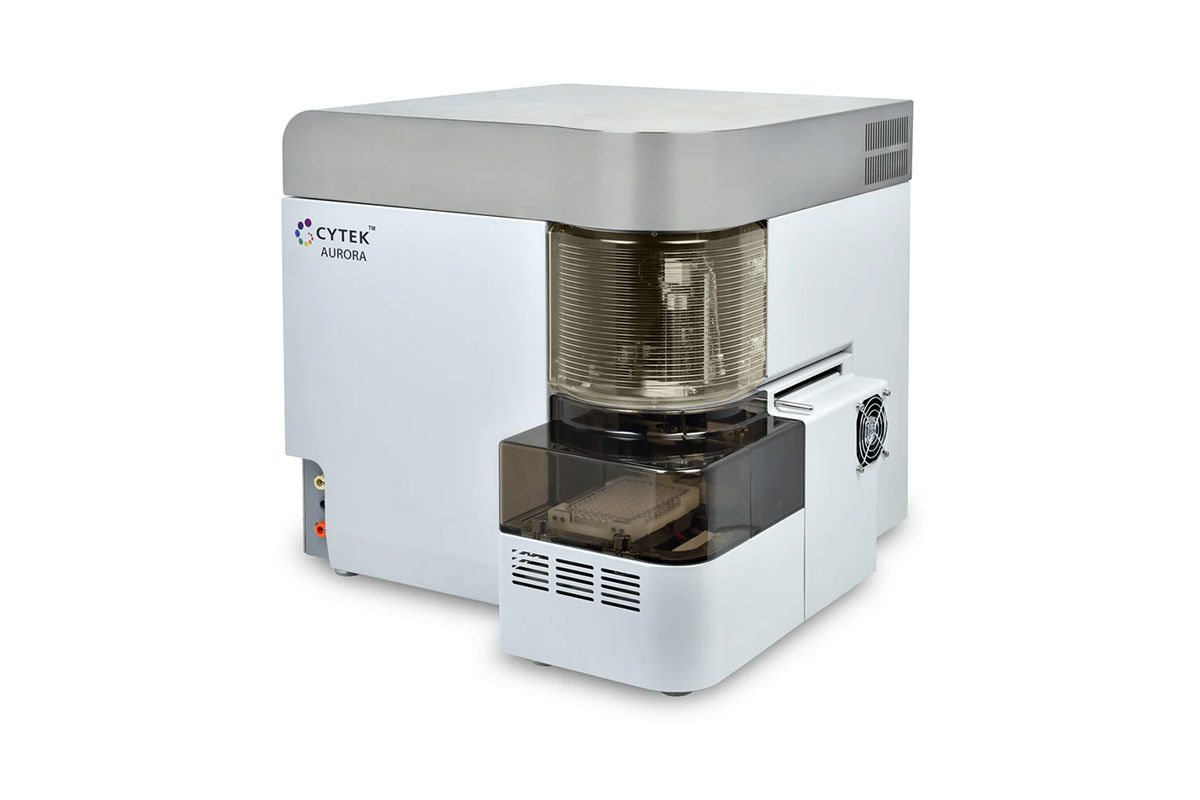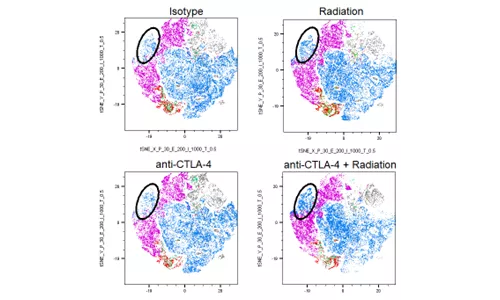How does spectral flow cytometry work?
Spectral flow cytometry offers unique optical collection and analytical capabilities enabling the use of a wide range of fluorochrome combinations without reconfiguring the system for each application, resulting in exceptional sensitivity with simple and intuitive operations. Full spectrum signatures are generated for each fluorochrome bound to cellular markers that are used to identify different cell types. Different signatures present in a multicolor sample are then unmixed to allow the use of fluorochromes with close emission peaks in the same sample. This expansion in fluorochrome options and panel size potential, along with the vacuum-powered fluidics system, makes the Cytek® Aurora spectral flow cytometry particularly suitable for studies where unique biomarker signatures are sought or sample availability is limited.



